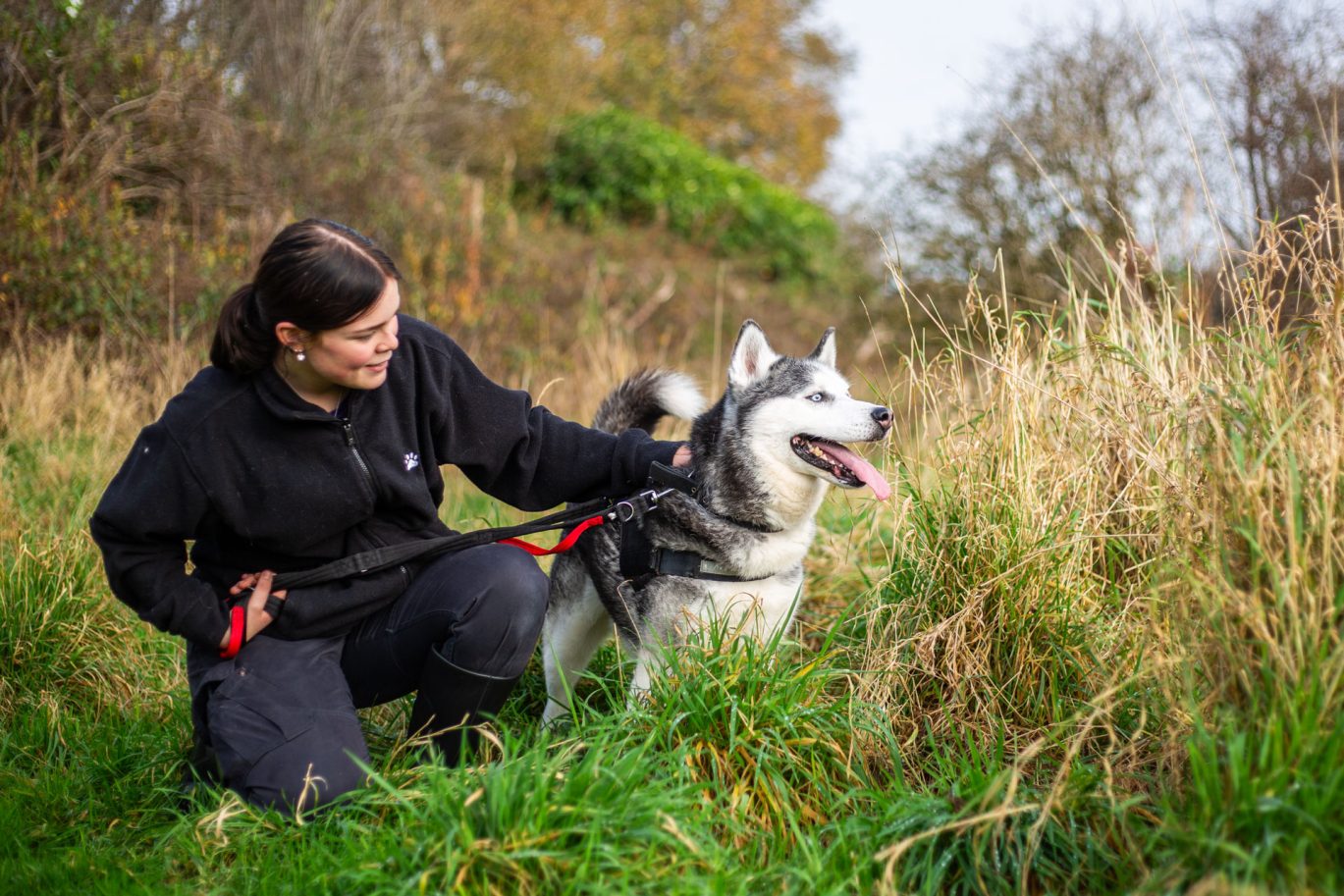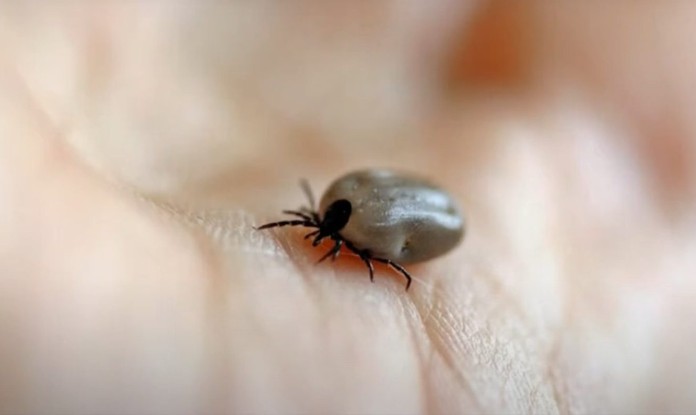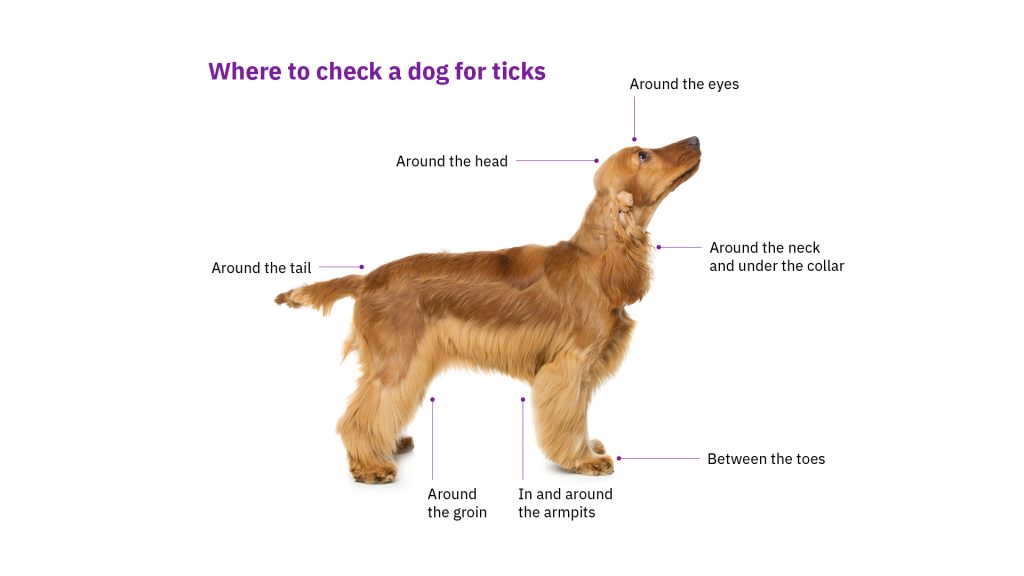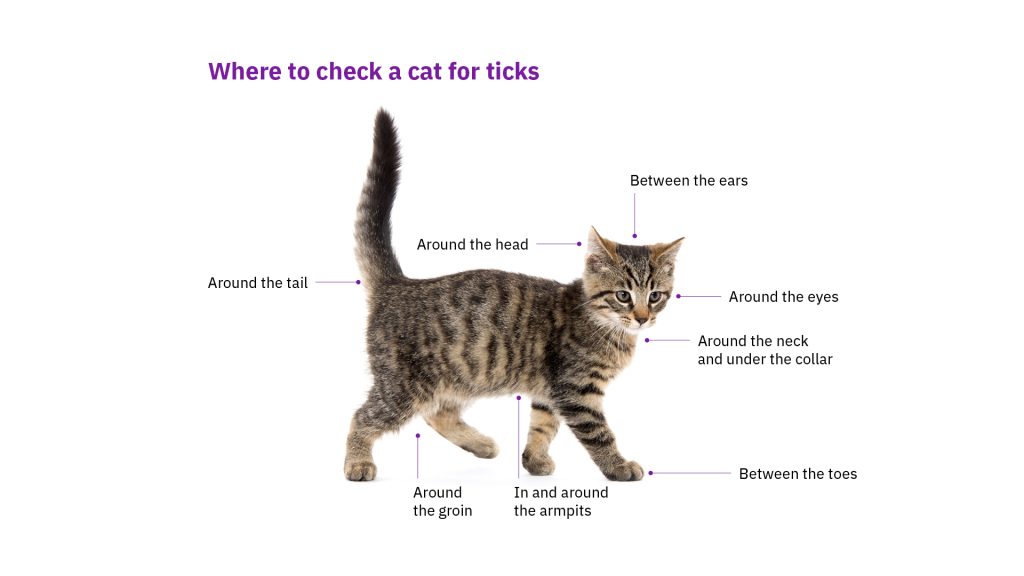
Ticks on Dogs and Cats
How to identify these parasitic pests and remove them safely from your pet.
A woodland walk can be a great experience for both you and your pet but be wary of what you can bring back with you. Ticks love to hide in woodland areas and tall grass and you, or your pet, can easily pick up one of these pesky parasites and bring it into your home. Ticks can cause a multitude of issues, so it’s important to know how to spot them, treat them, and prevent them.
What are ticks?
Ticks are small parasites that suck blood from humans and animals. They have 8 legs and an egg-shaped body that begins as a dark brown colour and then becomes a greyish white as it fills with blood.
They don’t fly or jump like fleas, instead they climb or drop onto your pet’s coat when your cat or dog brushes past where the tick is. They can vary in size from 1mm to 1cm and your pet may not notice them as they have an anti-inflammatory substance in their saliva.
These small arachnids are most common in woodland and grassy areas and are most likely to be seen in spring and autumn. You or your pet can transport ticks inside where they can bite other animals, or humans, in your home.

What does a tick look like on a dog?
Before a tick has bitten and latched onto your dog, you may see them walking across their fur. At this stage, they will look like small, dark brown insects. Once they have started to feed on your dog, they will get larger and paler, appearing as small lumps on their skin. Sometimes the surrounding skin will be swollen and red. Ticks commonly target your pet’s head, neck, armpits and groin.

Ticks on cats
Cats are less likely to get ticks as they are not as often walking in tall grass and woodland areas, however, it can still happen – especially if there is a dog in the household or if you have brought one into the home yourself. Ticks will also appear as small lumps in your cat’s fur, usually around their head, neck, ears and between their toes.

Signs your dog or cat has a tick
As touched on before, ticks have an anti-inflammatory substance in their saliva which can make it difficult for your pet to exhibit signs of having one. Checking your pets’ fur daily, especially after being outdoors, is the best way to discover a tick.
Carefully feel for small, round bumps on their skin and part the fur to examine closer. You can also check for signs of irritation such as red, inflamed skin or itching in some cases.
Ticks usually feed on your pet for a few days and drop off when they’ve had enough. Ticks can cause local inflammation or infection but can also carry other diseases, such as Lyme disease. This is more likely to be transmitted the longer the tick is feeding, so it’s important to check for them regularly and remove them as soon as possible.
Ensure you’re checking all the key places on your dog or cat such as between their toes, under their collar and around their ears. We’ve created a YouTube video that shows you exactly where to check your pet.
How to remove a tick from a dog or cat
The best, and safest, way to remove a tick is using a removal tool. These can be purchased from your vet or a pet shop. This tool twists the tick off, rather than pulling it straight out as doing this can leave part of the tick, such as its head, in your pet. It’s important that you don’t squeeze the tick’s body, or leave the head in, as this can push blood back into your pet, increasing the chance of disease.
Before removal, identify the legs of the tick. Some skin lumps can look similar to ticks but will be painful if you try to remove them. Speak to your vet if you’re in doubt.
To remove the tick, slide the claw of the tool under the body and legs and gently twist in one direction until the tick lets go. Examine it on a piece of white paper to make sure it is fully intact. Don’t squeeze the tick once it has been removed as this could still spread disease. Pop it in a jar or container to dispose of it properly. Your vet can advise you how to safely remove a tick if you’re unsure.
After removal, the site may be inflamed because the tick has damaged the skin and injected foreign material into the body. The anaesthetic part of its saliva has been removed, along with the tick, so your pet might start to feel sore and itchy at the site. This is usually mild and fades over the space of a week, however, if the swelling is significant, discharging liquid or pus, or is painful, consult your vet as soon as possible.
How to prevent ticks on your pets
You can buy tick treatments from vets and pet shops that kill or repel ticks if they attach themselves to your dog or cat. There are different types of treatments ranging from spot-on remedies to tablets. Ask your vet for recommendations for your pet.
It’s crucial that you don’t use dog tick treatments for your cat or vice versa. Dog treatments can contain chemicals that are toxic, and even fatal, for your cat.
Lyme disease
During the time in which the tick is attached to your pet it could pass on a disease. The most common tick-transmitted disease is Lyme disease. This is a bacterial infection that affects dogs, cats and humans, although it is uncommon in cats.
Symptoms of this disease include:
- Depression
- Loss of appetite
- Fever
- Lameness
- Swollen and painful joints
- Swollen lymph nodes
- Lethargy
If this disease is caught early, your vet can give your pet antibiotics to tackle this. If you suspect your cat or dog of having Lyme disease, then contact your vet immediately and they can run tests and start treatment. If left untreated, this can lead to serious complications such as kidney failure, heart problems and nervous system failure.
Ticks and humans
You can also get targeted by ticks when walking in commonly infested areas. If you’re bitten, then you can use the tick twisting tool to remove the parasite.
Lyme disease can also affect humans, so take the same precautions when removing a tick as you would with your pet. If you’re concerned about the bite or diseases, then consult your GP.
You can prevent tick bites by wearing long-sleeved tops and trousers when walking and using insect repellent.
We need your help
We hope this advice helps you when dealing with tricky ticks and reminds you to always check your furry friend for this foe.
Please consider giving a one-off donation today to help us provide essential treatments for the animals in our care.

Puppies across Scotland need your help
Please consider giving a monthly donation today. Give Scotland’s animals the gift of safety this winter and beyond. The criminals involved in the low-welfare puppy trade never stop. And with your help, neither will we. Every £1 matters to puppies like Winnie.


